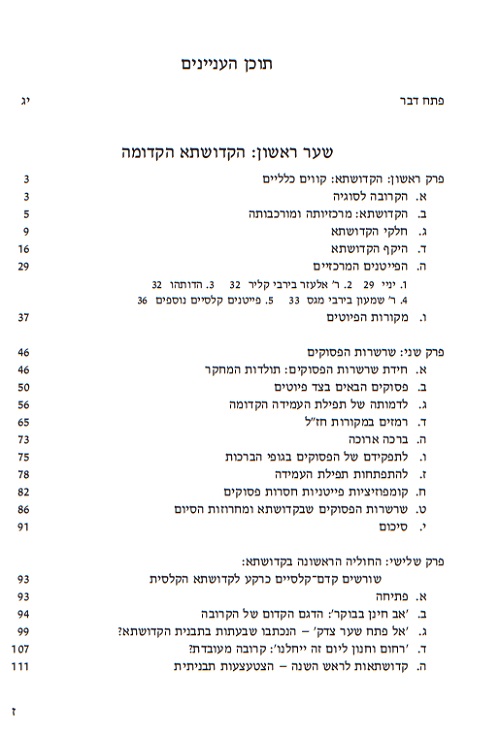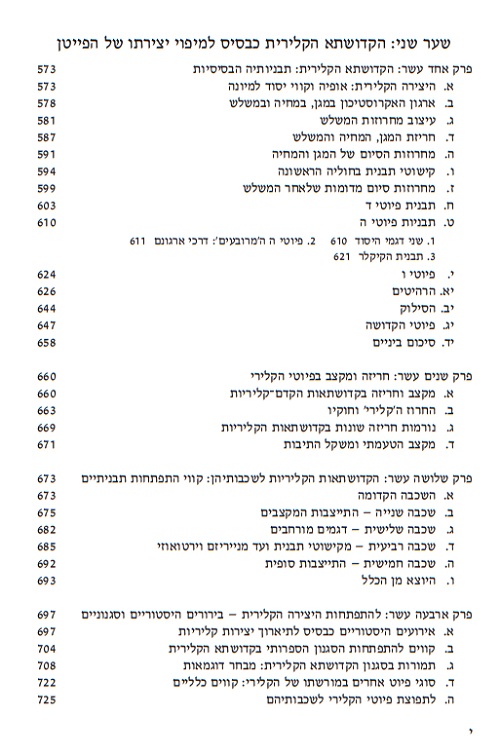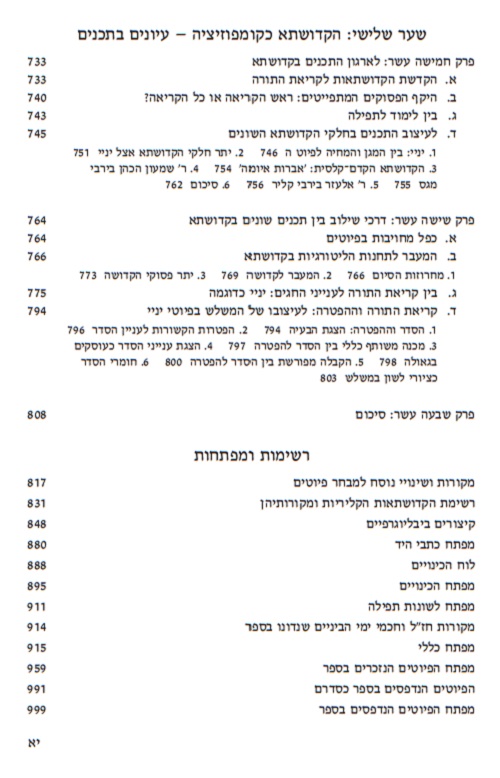Three New Books
Three New Books
By Eliezer Brodt
In this post I would like to briefly describe three new works, which are hot off the press. For a short time, copies of these three works can be purchased through me for a special price. Part of the proceeds will be going to support the efforts of the Seforim Blog. Contact me at Eliezerbrodt@gmail.com for more information.
The first title is printed by the World Congress of Jewish Studies:
פירוש רש”י לספר משלי, ההדירה והוסיפה מבוא והערות ליסה פרדמן
Lisa Fredman’s, Rashi’s Commentary on the Book of Proverbs is a critical edition of Rashi on Mishlei based on numerous manuscripts. It includes a very extensive introduction and many valuable notes throughout the volume. Critical editions of Rashi are always welcome and very important, sadly not enough of them exist. One section in the introduction which I found interesting relates to Rashi and his responding to Christians and Christianity specifically in his work on Mishlei.
Here is the table of contents for this work:
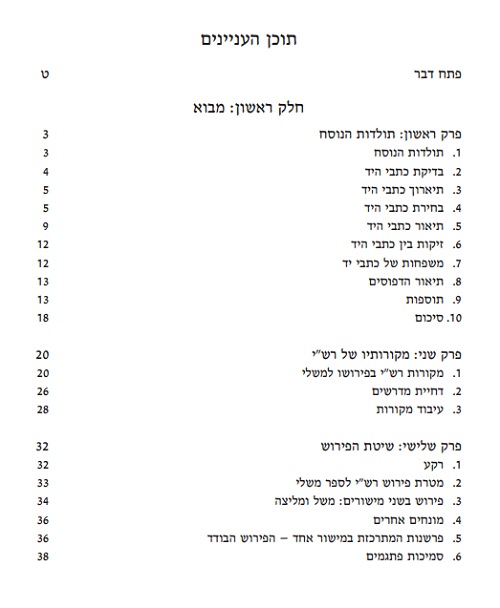
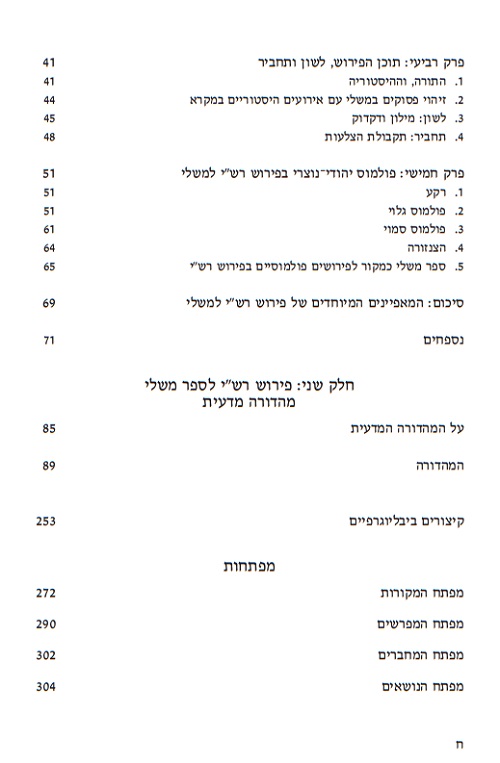
מגנזי אירופה כרך שני ההדיר והוסיף מבואות, שמחה עמנואל, 408 עמודים
The Second volume which I am very happy to announce is the publication of an important work which I have been eagerly waiting for, Professor Simcha Emanuel of the Hebrew University’s Talmud department’s volume of texts from the “European Genizah”, volume two. This volume was just printed by Mekitzei Nirdamim and is being sold by Magnes Press. [Volume one was mentioned earlier on the blog here]. For a sample chapter e mail me at Eliezerbrodt@gmail.com.
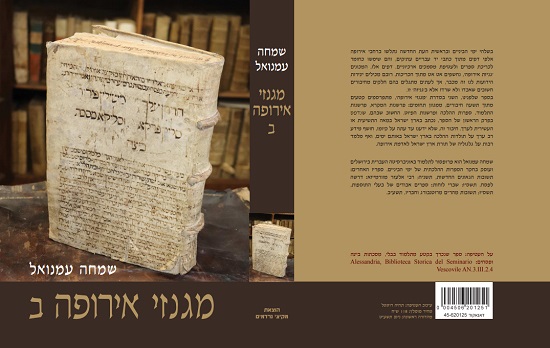
Professor Emanuel is considered one of the today’s greatest experts in Rishonic literature. He has produced numerous special works [such as this recent work, this, this and my favorite] and articles of both texts and material about them for quite some time. [Many of which are available here] All of which are of very high quality, showing an incredible breadth and depth in the material at hand. One area of specialty of his is finding long-lost works; this new volume continues this trend. It includes numerous newly discovered texts of Rishonim, with introductions and background of their importance and proof of identification. Some of the discoveries are simply put remarkable detective work, how he pieces together the various pieces of the puzzle.
The author writes in the abstract of the book as follows:
The purpose of this volume, like its predecessor, is to uncover fragments of important Hebrew works hidden in the “European Genizah”. Thousands of pages of Hebrew manuscripts have been discovered in this “Genizah”, which is scattered in hundreds of libraries and archives throughout Europe and even beyond. In the late medieval and early modern eras, these pages were used to bind books and as folders of archival documents. In the first volume of this series, I published eleven new works from the “European Genizah”, prefacing them with a wide-ranging introduction about the nature of this “Genizah”. Nine additional works are published in the present volume.
The works published herein are from a variety of genres: Biblical exegesis, Talmud commentary, halakhic literature, and liturgical interpretation. They appear in this volume in chronological order, from earliest to latest. The most significant of the works is also the work whose discovery required more effort than all of the others; it appears in the first chapter of the book. This work was written — I wish to argue — in ninth or tenth-century Palestine. It reveals valuable information on the history of halakhah in Palestine of that era, and also teaches a great deal about how Palestinian Traditions made their way to the European continent. This work still requires a great deal of study, and I hope that others come along to add to my words. The fragments published here were identified in the collections of fourteen archives and libraries. These institutions, located throughout Europe, aptly reflect the dispersal of the European Geniza.
Here are the Table of Contents of this special work:
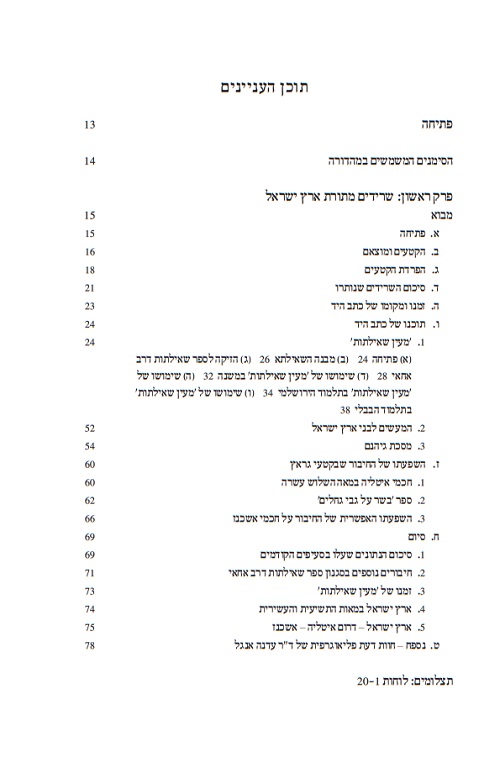
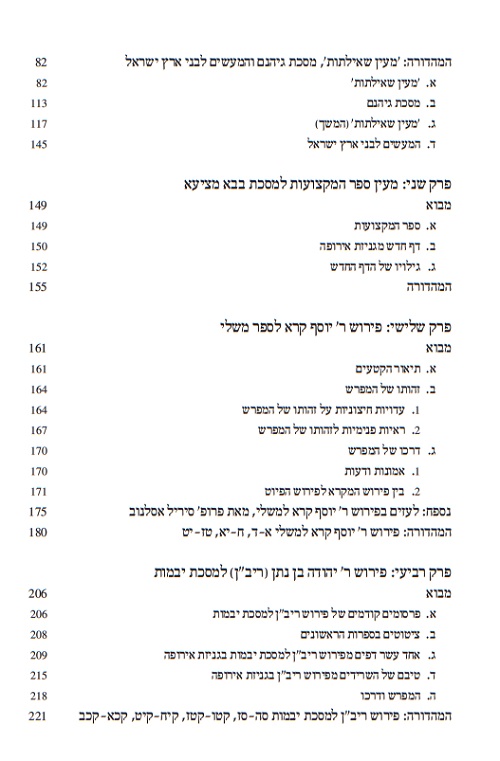


The third work is also printed by the World Congress of Jewish Studies.
שולמית אליצור, סוד משלשי קודש: הקדושתא מראשיתה ועד ימי רבי אלעזר בירבי קליר
This work Sod Meshalleshei Qodesh is written by Professor Shulamit Elizur (see here), one of the worlds leading experts on piyut. Some have claimed this work will change the study of piyut completely. In an interview published in Ami Magazine and reprinted with updates on the Seforim Blog (here) Elizur was asked:
Which sefer do you consider your biggest accomplishment— your magnum opus?”
She replied:
“The one I’m in the middle of writing right now. It’s a sefer on the history of the kedushta, which are the piyutim composed to be recited right before Kedushah. There are many chiddushim in that sefer and also things about Rabbi Elazar Hakalir that I discovered.”
This book is now out and is over one thousand pages!.
The following is the abstract of the book translated into English for the readers of the Seforim Blog by Dr. Gabriel Wasserman (and is not found in the actual book). This will give one a good idea of what the purpose of this work is:
Sod Meshalleshei Qodesh: The Qedushta From its Origins until the Time of Rabbi El‛azar berabbi Qillir
A qedushta is a series of piyyutim for the ‘Amida prayer, which is expanded in honor of the recitation of the Qedusha, and includes many complex components. Its origins are in the Land of Israel, in the fourth or fifth century. We first see it as a constructed composition with set, complex, rules in the work of the poet Yannai, who lived in the mid-sixth century, the teacher of Rabbi El‛azar berabbi Qillir (who is known popularly as “the Qallir”). The qedushta, as it appears in the hundreds of compositions by Yannai and his followers, conceals many secrets: mysterious strings of biblical verses accompany its first components; a fixed biblical verse concludes the third component, followed by the strange words “El Na”; then comes a fourth component, whose structure is free, and always concludes, for some reason, with the word “Qadosh”; the fifth component in Yannai’s compositions is the ‘asiriya, a poem constructed of a truncated alphabetical acrostic from only aleph to yud, followed by a prayer beginning “El Na Le‘olam Tu‘aratz” – and it is unclear why this prayer appears here; then there is a group of poems called rahitim, which are written, for some reason, in unique, stereotypical structures. These are only a fraction of the various strange features of the qedushta’ot of Yannai and the other poets. The discussions in the book are dedicated to suggesting solutions to all these questions, and to others, and involve uncovering fragments of qedushta’ot that preceded Yannai; by examining these texts, they excavate the literary remains to construct a model of the gradual development of the qedushta over time, from its origins until it reached its complex structure in the days of Yannai and Rabbi El‛azar berabbi Qillir.
The first section of the book, which is the largest, is devoted to this development of the qedushta, in all its elements, including those that follow the recitation of Qedusha. Naturally, this section deals with the piyyutim mostly from a structural point of view, for only such an analysis can enable a comprehensive look at the development of the genre. However, as a base for these structural analyses, this section contains the texts of many piyyutim, mostly pre-classical (from the period before Yannai, when the poets did not yet use rhyme). Alongside them are printed classical rhyming piyyutim, too, from the period of Yannai and his colleagues, and, in a few instances, even piyyutim from later periods.
The second section of the book focuses on one single poet: Rabbi El‛azar berabbi Qillir, the most prolific of the classical poets in the Land of Israel, whose poems reached Europe, and some of them are recited in Ashkenazic and Italian synagogues through today. The qedushta’ot of Rabbi El‛azar berabbi Qillir are varied in both their structures and their styles, much more than those of Yannai; this section is devoted to an analysis of these compositions, and an attempt to map out which ones are earlier and which later. On the basis of precise structural analysis, the section builds a higher level of analysis – stylistic; and thus we see the picture of the great poet’s literary journey. It becomes clear that when he was started out, he was heavily influenced by the work of Yannai, and slowly he created new ways for himself: at first he went in the direction of obscurity and difficulty, which he gradually made more and more obscure; but then, in a later, more mature phase, he turned to pure lyrical song, which today’s reader, too, will find sweet.
The third section leaves aside the structural analyses, and suggests directions for further research. This section is short, and contains only first steps towards new directions in piyyut analysis. It focuses primarily on content, and ways that the qedushta’ot are organized, but it moves on to questions of how the qedushta is constructed as a complete composition, and points out various difficulties that the poets needed to overcome, and analyzes at length their literary solutions to these problems. Yannai stands at the center of the discussion in this section, but there are also notes about other poets. Most of the suggested directions for further research are new, and we hope that they will lead to further productive scholarship, and make it possible to study the piyyutim from angles that have hitherto been less examined.
Throughout the book, phenomena are demonstrated by means of the texts of piyyutim. More than 250 piyyutim are printed in the book, of which about 130 are being printed for the first time. Most of these piyyutim are from the earlier periods of piyyut, and their publication in this volume reveals the full contribution of these layers of the genre to our understanding of the history of the qedushta. Even the piyyutim that have already been printed elsewhere often were published in out-of-the-way publications, some of them with no vowels or commentary. It goes without saying that for this volume, these texts were all printed anew straight from the manuscripts. When pieces from Yannai’s work are cited to exemplify some point, an attempt has been made, inasmuch as possible, to use pieces that have not been included in the existing publications of his work, and thus the volume contributes a great amount of new material to the corpus of Yannai’s piyyutim. The volume as a whole is based on examination of hundreds of manuscripts, mostly from the Cairo Geniza, and these provide a wide, firm textual basis to the analysis.
The book is intended first and foremost for scholars, but it will also enable people interested in piyyut and its history from outside the world of academia to gain exposure to a great corpus of early piyyutim, among which are several stunningly beautiful gems, which are being published here for the first time.
For the Hebrew abstract email me at eliezerbrodt@gmail.com
Here is the table of contents:
